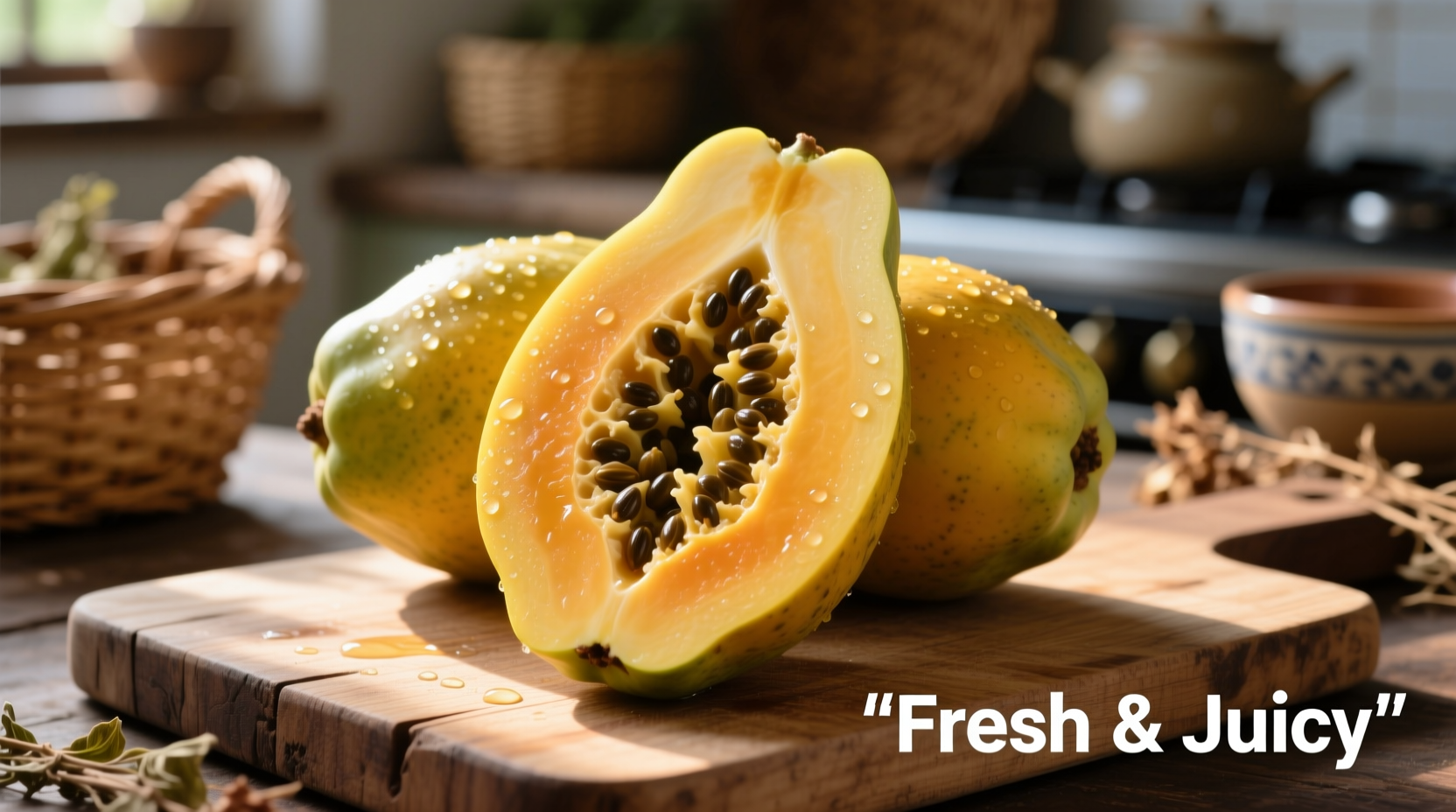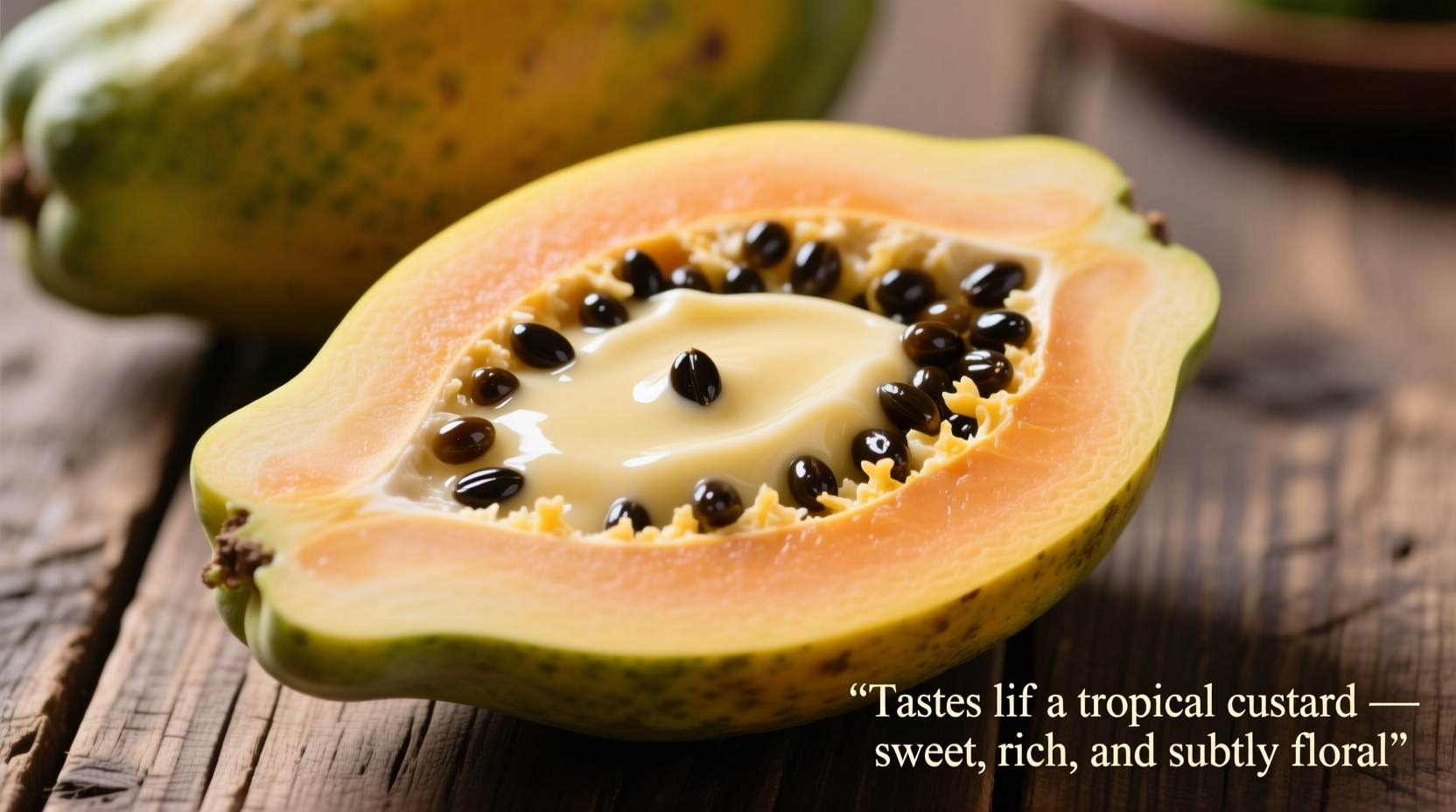Pawpaw (Asimina triloba) tastes like a tropical custard blend of banana, mango, and citrus with subtle notes of vanilla and caramel. The ripe fruit has a creamy, smooth texture similar to ripe avocado or banana pudding, with a complex flavor profile that’s sweet but not cloying, featuring hints of melon and퀵 pineapple in the finish.
Understanding the Pawpaw: North America's Forgotten Fruit
Before we dive into the sensory experience, let's clarify a common misconception: pawpaw (Asimina triloba) is completely different from papaya (Carica papaya). While the names sound similar and both have tropical flavor profiles, they're unrelated species from different continents. The North American pawpaw is the largest native fruit in the United States, historically foraged by Indigenous peoples and early settlers before falling out of mainstream cultivation.
Your First Encounter with Pawpaw
When you hold a ripe pawpaw, you'll notice its oblong shape and green-to-yellow skin that’s slightly soft to the touch. Unlike many fruits, pawpaws don't continue ripening well off the tree, which explains their rarity in commercial markets. The aroma is your first clue to its flavor profile – a sweet, fruity scent with distinct banana-like notes that intensifies as the fruit ripens.

Deconstructing the Pawpaw Flavor Experience
The taste experience unfolds in layers when you take your first bite of ripe pawpaw:
- Initial impression: Sweet banana flavor with tropical undertones
- Middle notes: Creamy mango and subtle citrus elements
- Finish: Hints of cantaloupe,퀵 pineapple, and a delicate vanilla-caramel aftertaste
This complex flavor profile earns pawpaw its nickname “tropical fruit of the temperate zone.” The sweetness level typically ranges from 15-20° Brix (sugar content), comparable to ripe banana but with more nuanced flavor complexity.
| Flavor Component | Comparable Fruit | Intensity in Ripe Pawpaw |
|---|---|---|
| Primary Sweetness | Banana | High (dominant note) |
| Tropical Undertones | Mango | Medium-High |
| Citrus Notes | Cantaloupe/Pineapple | Medium |
| Finish | Vanilla/Caramel | Low-Medium (lingering) |
Texture: The Custard-Like Quality That Defines Pawpaw
Perhaps just as important as the flavor is pawpaw's distinctive texture. When perfectly ripe, it has a smooth, creamy consistency similar to custard or ripe avocado. The flesh is pale yellow to orange-yellow and contains several large, dark brown seeds that should be removed before eating. Unlike banana, which can be stringy, pawpaw has a uniformly smooth mouthfeel that’s often described as “native banana pudding.”
This unique texture explains why pawpaw is commonly used in desserts, smoothies, and ice creams – it blends beautifully while maintaining its distinctive flavor.
How Ripeness Transforms Pawpaw Flavor
Ripeness dramatically affects pawpaw's taste experience. Understanding the ripening timeline is crucial for optimal enjoyment:
Green stage: Hard fruit with minimal flavor – not suitable for eating
Yellowing stage: Slight softening, mild banana aroma, subtle sweetness begins to develop
Soft stage: Skin turns yellow-green, yields slightly to pressure, full aroma emerges
Optimal stage: Skin may have brown speckles, very soft to touch, intense tropical aroma, maximum sweetness
Overripe stage: Skin darkens significantly, fruit becomes mushy, flavor intensifies but may develop fermented notes
According to research from Kentucky State University's Pawpaw Program, the sugar content increases by approximately 40% during the final ripening stage, while volatile compounds responsible for the tropical aroma increase nearly threefold.
Seasonality and Where to Find Pawpaws
Pawpaws have a remarkably short season compared to most commercial fruits. They typically ripen between late August and early October, depending on latitude and climate conditions. This narrow harvest window contributes to their scarcity in grocery stores.
For those seeking pawpaws, your best options include:
- Local farmers' markets in eastern and midwestern US states
- Specialty fruit farms that cultivate pawpaw
- Foraging in wooded areas where pawpaw trees grow wild (primarily east of the Mississippi River)
- Community-supported agriculture (CSA) programs featuring regional fruits
Practical Tips for Enjoying Pawpaw
Now that you know what pawpaw tastes like, here's how to make the most of this unique fruit:
Selecting Ripe Pawpaws
Look for fruits that yield slightly when gently squeezed (like a ripe avocado). The skin should be mostly yellow with possible brown speckles. Avoid fruits with large bruises or overly soft spots.
Storing Pawpaws
Ripe pawpaws are highly perishable. Store them in the refrigerator for up to 3 days. For longer storage, puree the flesh and freeze in airtight containers – the flavor holds up well to freezing.
Serving Suggestions
- Eat fresh with a spoon, like custard
- Add to smoothies for tropical flavor without banana
- Use in place of banana in baked goods
- Create pawpaw ice cream or sorbet
- Blend into salad dressings for unique flavor
Common Misconceptions About Pawpaw Flavor
Several myths persist about pawpaw's taste profile:
- Myth: Pawpaw tastes exactly like papaya
Reality: While both have tropical notes, pawpaw is sweeter, creamier, and lacks papaya's distinctive musky flavor - Myth: Pawpaw has an unpleasant “yeasty” flavor
Reality: Only unripe or overripe pawpaws develop off-flavors; perfectly ripe fruit is sweet and pleasant - Myth: All pawpaws taste the same
Reality: Flavor varies significantly by cultivar, with some emphasizing banana notes while others highlight citrus or melon elements
According to sensory analysis conducted by the University of Maryland Extension, flavor variation between pawpaw cultivars can be as significant as the difference between strawberry and raspberry varieties.
Why Pawpaw Deserves More Attention
Beyond its delightful flavor, pawpaw offers impressive nutritional benefits. It's rich in vitamin C, magnesium, iron, and manganese, with more protein than most fruits. The fruit also contains annonaceous acetogenins, compounds being studied for potential health benefits.
As interest in locally-sourced, sustainable foods grows, pawpaw represents an exciting opportunity to reconnect with North America's native food heritage. Its complex, tropical-like flavor in a temperate climate fruit makes it a true culinary treasure worth seeking out during its brief season.











 浙公网安备
33010002000092号
浙公网安备
33010002000092号 浙B2-20120091-4
浙B2-20120091-4